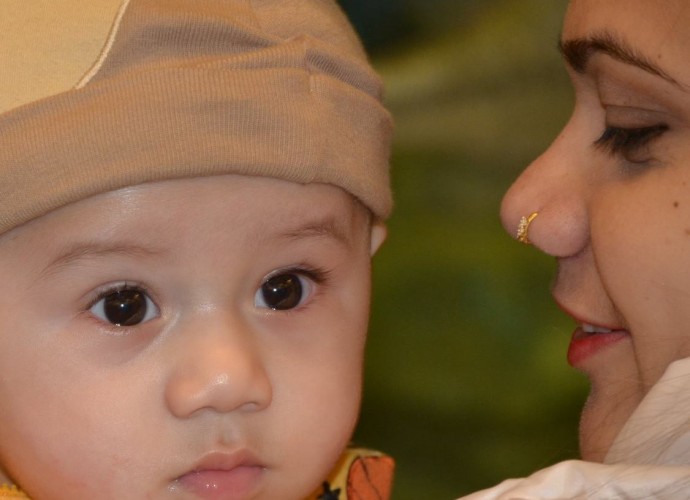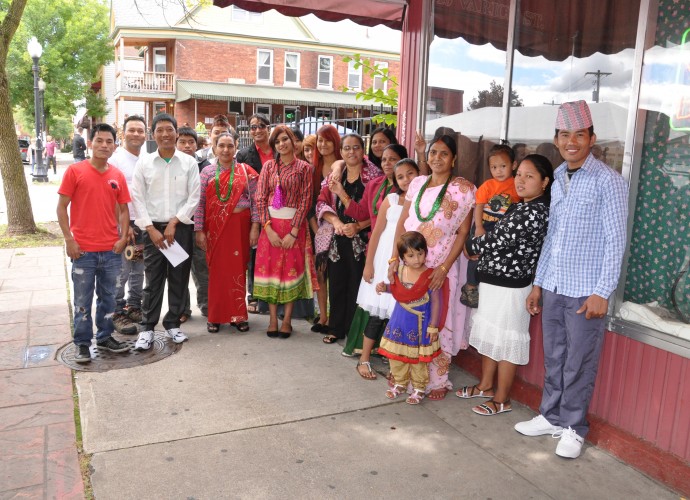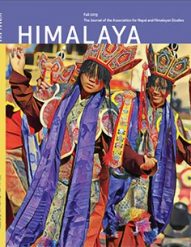Photo Essay
Starting Over: Bhutanese-Nepali Refugees in Utica, NY
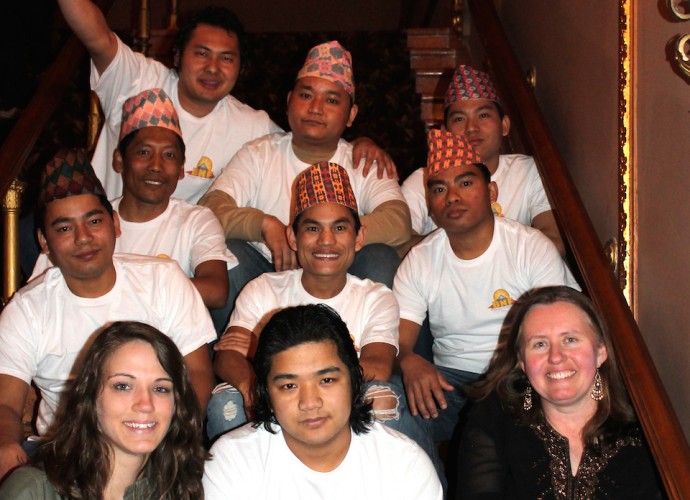
Authors Katie Reilly and Kathryn Stam pose here with Santa Rai and other members of the Bhutanese-Nepali Folk Collective, including coauthor of this piece Mon Ranamagar (upper right). The band, which includes traditional and popular dancers as well, was formed in December 2012 and has performed many times since then at cultural fairs and local colleges. The band plays traditional folk songs in Nepali language, and aims to maintain their cultural traditions and ideas for the sake of their community. April, 2013. Photographer: Krishna Adhikari.

High school students Samuel Rai and Amrit Jyogi keep themselves amused during some relaxed moments of a Christian wedding ceremony in Syracuse, NY. May, 2013. Photographer: Krishna Adhikari.

This photograph was taken of high school student Lovely Humagai at the wedding of a neighbor. There is no Hindu temple in the city so ceremonies are done at home, often with the reception held under a tent in the yard. May, 2013. Photographer: Zora Thomova.

Ayoush Acharya took some time biking around his house while his uncle was getting married upstairs. May, 2013. Photographer: Zora Thomova.

The Bhutanese government conducted a census in 1988 and required that every family submit a group photograph. This photo of the Ranamagar family was taken just a few weeks before they were forced to leave Bhutan as refugees in 1992. From there, the family moved to Goldhap and then Beldangi 3 refugee camps in Jhapa, Nepal, where they lived for almost 20 years before being resettled to Utica, NY. Amber Ranamagar (from the previous two photos) is again featured here standing up on the far left. Photographer: Unavailable. Permission to publish from Harka Ranamagar.

Tek Monger is the first Bhutanese-Nepali refugee living in Utica, NY to become a citizen. Dec. 2013. The United States government requires five years of residency and a passing grade on the citizenship test. Bhutanese-Nepali youth are concerned that their parents and grandparents may not be able to become citizens due to difficulties with learning English and taking the citizenship test. Although they will have the right to remain as refugees in the U.S., they want citizenship for the many rights and benefits it provides. Photographer: Mon Ranamagar.
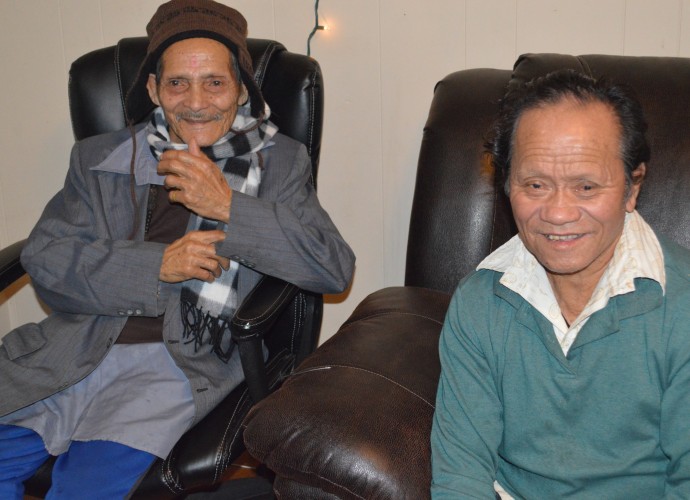
Grandpas Biswas and Monger relaxing and talking. It is often difficult for older people who do not speak much English to adjust to the changing lifestyles and community. They like to tell stories about when they were young men in Chirang, Southern Bhutan. Oct. 2013. Photographer: Krishna Adhikari.
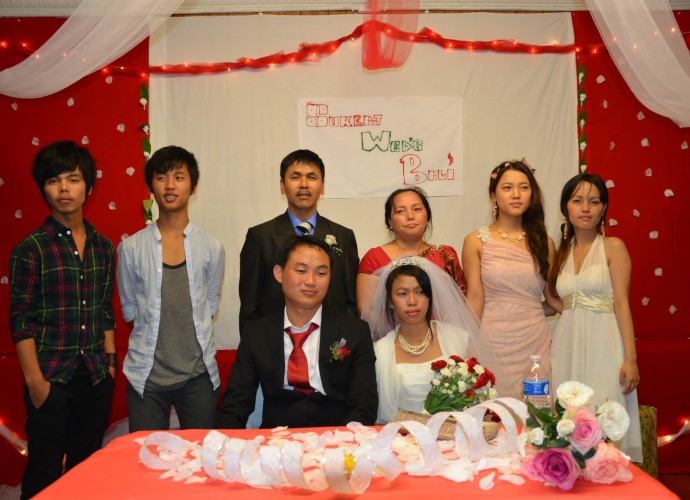
This photograph was taken at the Christian wedding reception of Sukraj and Bali Rai. Some of the Bhutanese-Nepali refugees in Utica, NY have maintained their Hindu or Buddhist faiths while the others have converted to Christianity. The Christians attend a local non-denominational church. They also maintain the tradition in which the bride goes to live with the groom, in this case a Utica resident. Nov. 2013. Photographer: Tek Monger.
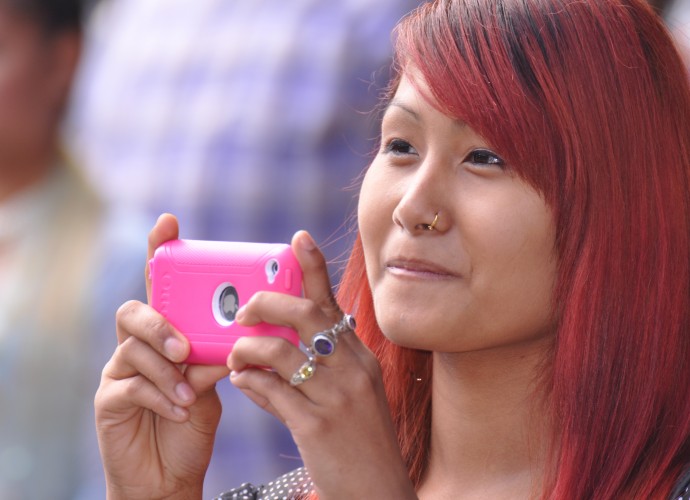
High school student and dancer Samjana Magar takes a photo of her relatives performing Nepali folk songs at the Utica Music and Arts Festival, Sept. 2012. Photographer: Lynne Browne.
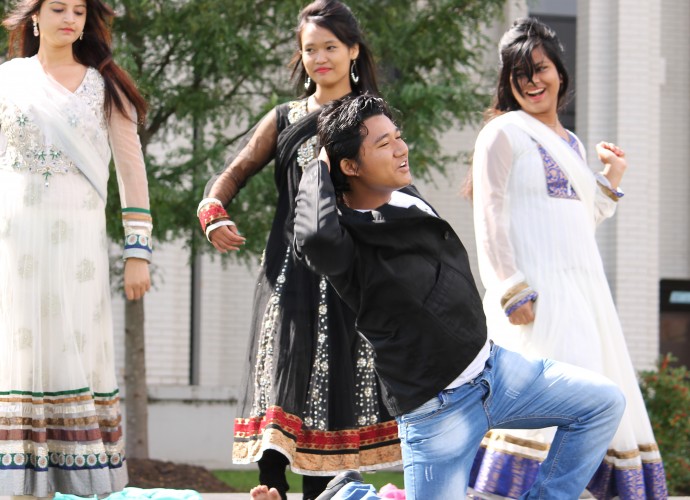
The crowd always appreciates dance teacher Nima Tamang and dancers Lovely Humagai, Sarada Yogi, and Pramila Rijal when they perform Nepali and Hindi songs. This photo was taken at the Mohawk Valley Community College (UMAF), Sept. 2013. Photographer: Katie Reilly.
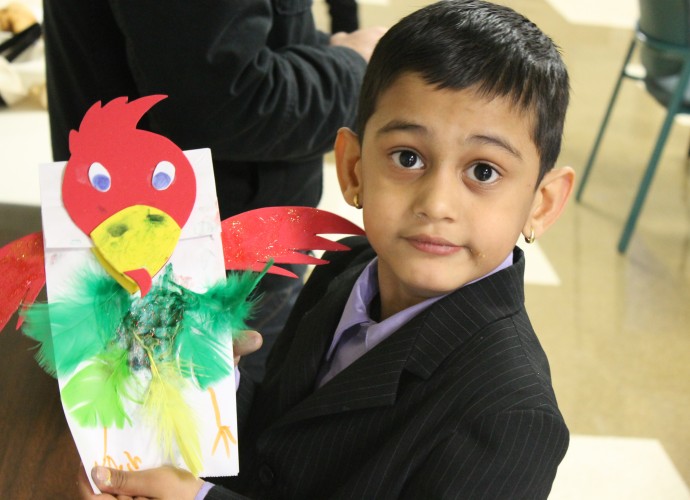
Ayouch Acharya participates in a puppet-making workshop at a local college in Dec. 2012. Bhutanese-Nepali boys have both ears pierced before their first birthday and many continue to wear earrings on special occasions later in life. Photographer: Katie Reilly.
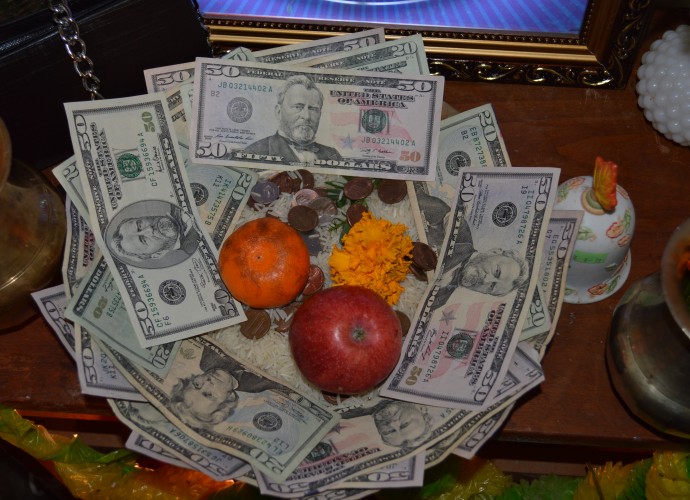
Offerings given during a puja (worship ceremony) to the goddess Laxshmi on the occasion of Deepawali. Nov. 2013. Photographer: San Acharya.
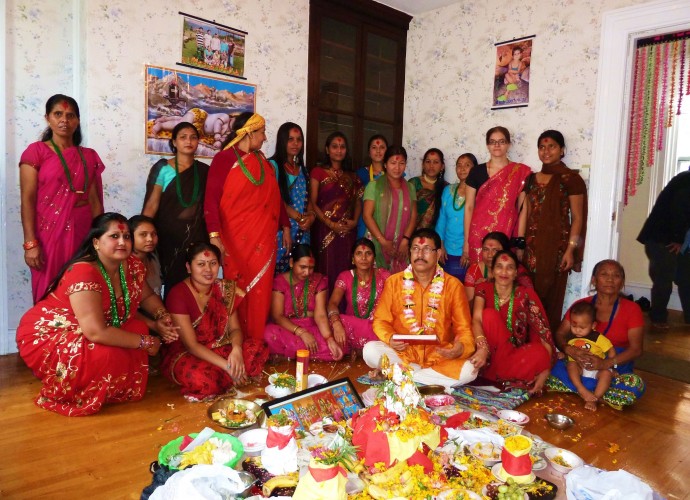
The women’s festival, called Teej, is celebrated in the traditional way at the home of the Hindu priest, Mr. Ganga Rijal. Women pray for the long-life and happiness of their husbands and themselves. August, 2012. Photographer: Mukti Rijal.
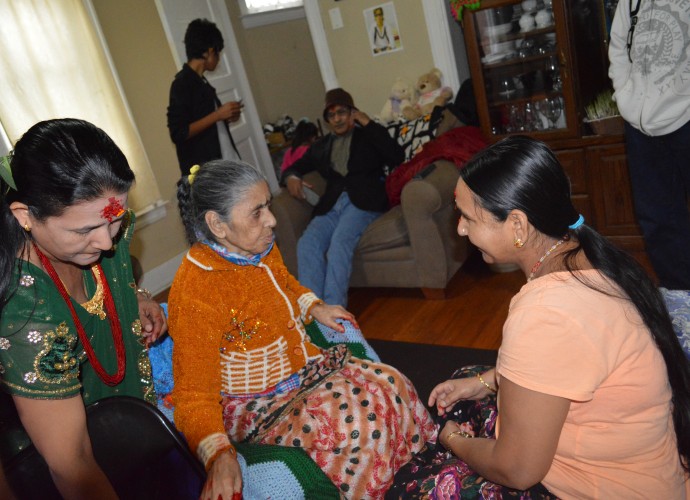
During important days for Hindus, it is still important to visit elders and request that they give a “tikka” (red paste with rice placed on forehead) and a blessing. Nov. 2013. Photographer: Krishna Adhikari.
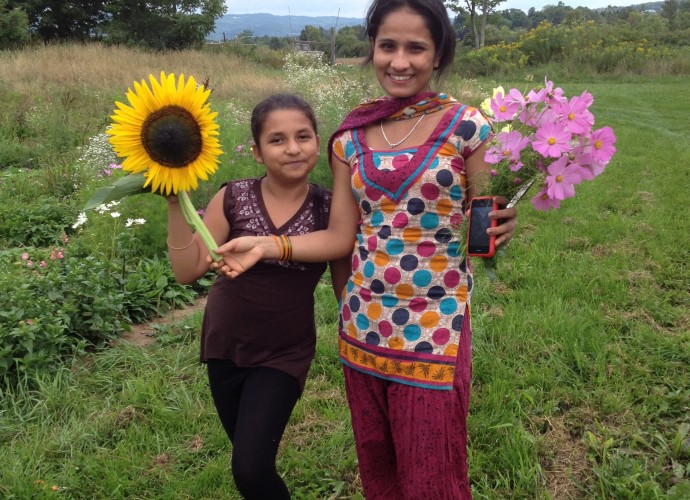
Old Path Farm, a nearby organic farm in Sauquoit, NY, has welcomed refugees to participate in planting, harvesting, cider-making, and other activities throughout the year. In this photo, Pisanti Adhikari and Sabitra Acharya show off the flower bouquets they picked for their mothers. June, 2012. Photographer: Kathryn Stam.
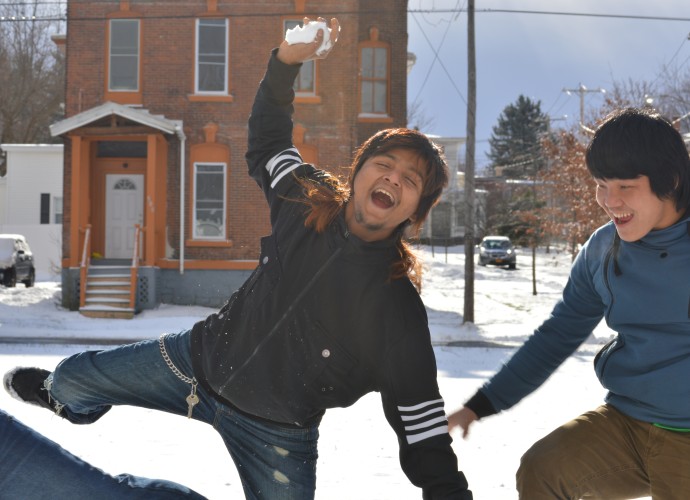
Abi Darjhee takes a break from his job at a factory to have some fun in the snow with friends. Utica, NY has remarkably cold winters and is very different from the Eastern Nepali climate. Community members are still adjusting to the burden of wearing winter clothing and are sometimes seen walking through the snow in their sandals with no socks. Dec. 2013. Photographer: Krishna Akhikari.
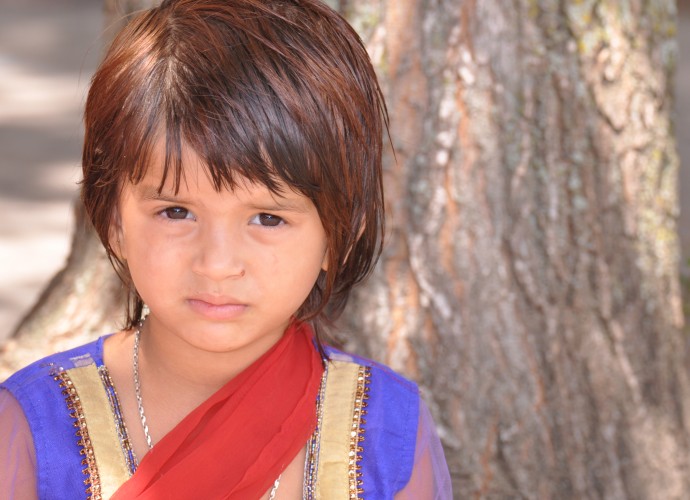
Priyanka Humagai enjoys watching her grandmother dance at the Utica Music and Arts festival, Sept. 15, 2013. Photographer: Lynne Browne.
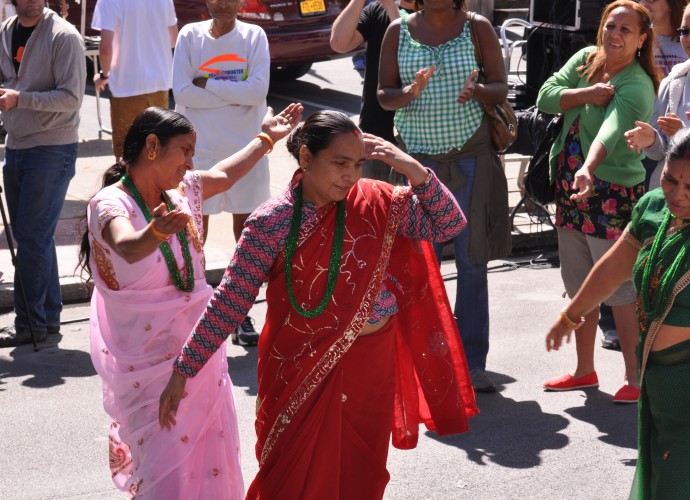
There are few things that make Dorna Baniya and Guyatri Rijal happier than dancing. It is rare that they get a chance to share their culture with an audience outside of the local refugee center. This photo was taken at the Utica Music and Arts festival, Sept. 15, 2012. Photographer: Lynne Browne.
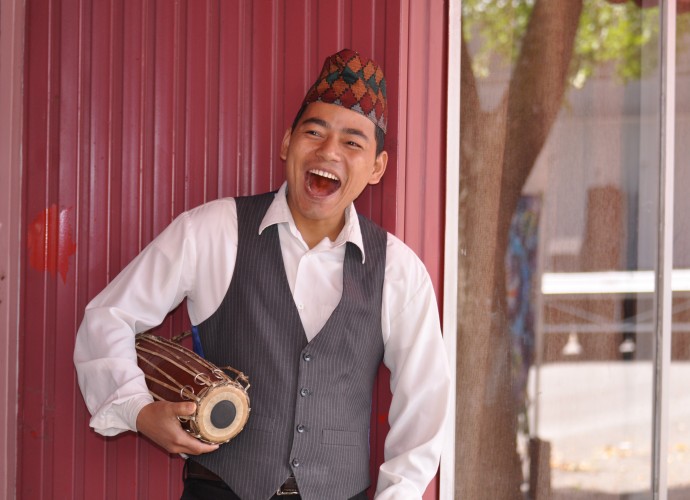
The traditional Nepali madal drum is the instrument of choice for Dil Ranamagar. He was born in Bhutan and lived in a Nepali refugee camp for almost 20 years. Sept. 15, 2012. Photographer: Lynne Browne.
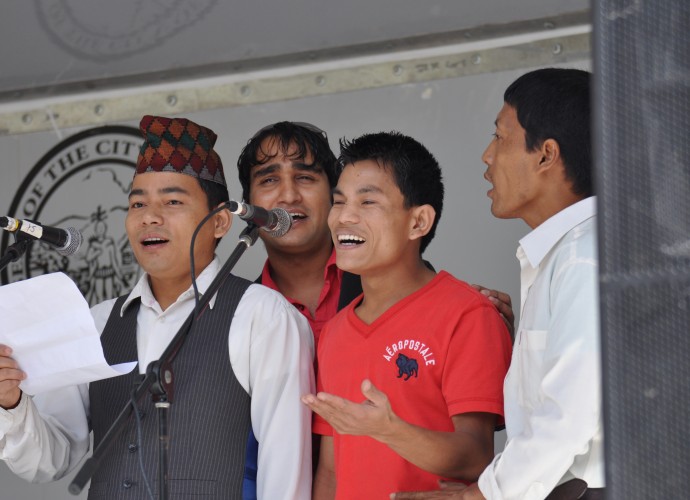
Members of the Bhutanese-Nepali Folk Collective perform at the Utica Music and Arts Festival. They share their Nepali folks songs and dances with an American audience. General Manager Tek Monger and his friends have always loved music and when they lived in Nepali refugee camps, they used to sing away their sorrows with traditional Nepali folk songs. Sept. 15, 2012. Photographer: Lynne Browne.
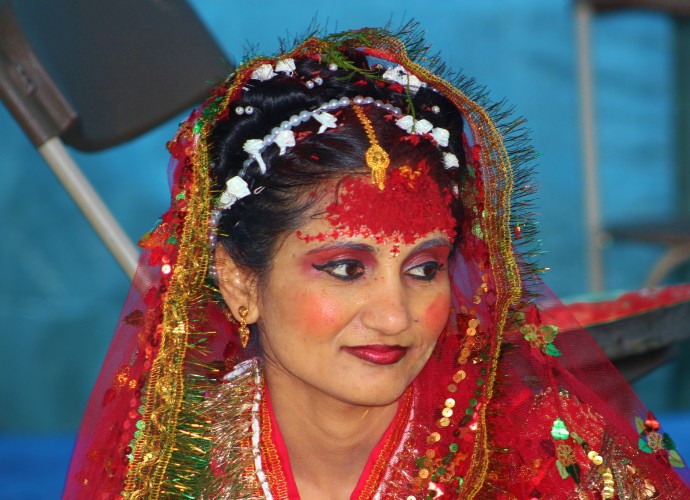
A Hindu bride, Meena Chumlagai, on her wedding day in Syracuse, NY. Bhutanese-Nepalis maintain the tradition of bringing the new bride to live with her husband’s family. May, 2013. Photographer: Andrea Kupris-Norton.
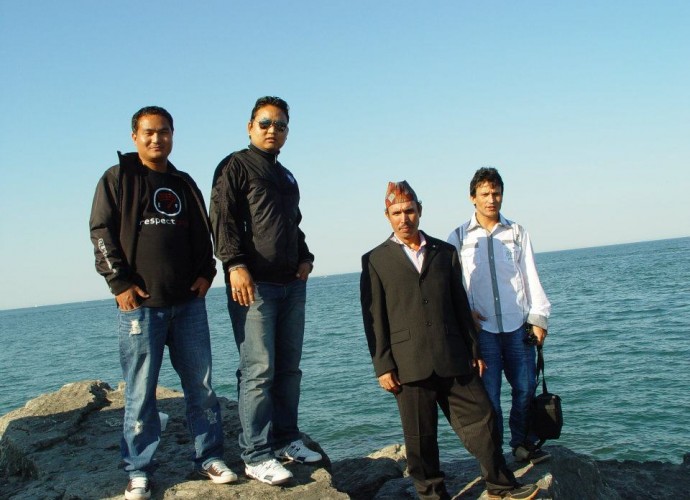
Visits to local parks and natural places are a favorite summer pastime of these friends and neighbors of Shyam San Rai (2nd from left). This photo was taken at Lake Erie and was chosen as the theme image for the, “Refugees Starting Over in Utica, NY,” project because it seems so unlikely that this group of refugee men would find themselves sitting by a lake in New York State. This is also an example of one of the hundreds of images that the project collected from refugees’ personal Facebook pages and exhibited (with permission) in a gallery exhibit at the SUNY Institute of Technology in Dec. 2012. Photographer: San Acharya.
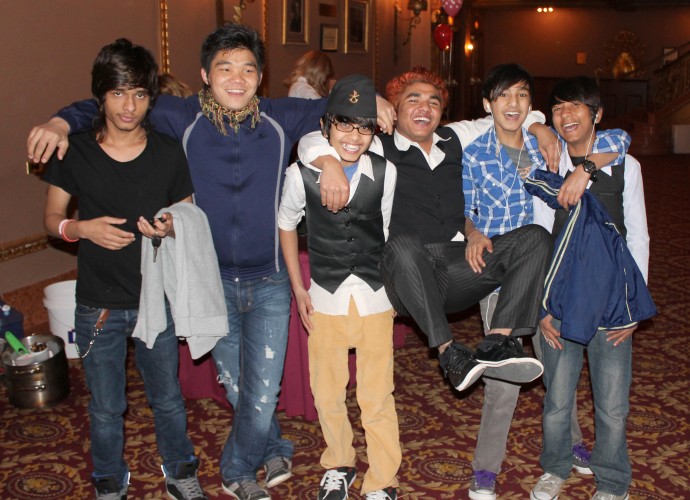
Bhutanese-Nepali teens enjoy themselves after a Nepali cultural performance at Culturefest on April 13, 2013 at the Stanley Theater in Utica, NY. These college and high school boys were all born in Nepal while their families were living in Beldangi 3 refugee camp in Eastern Nepal. They feel comfortable in native and Western dress, and are known in part for how frequently their change their hair color and style. Govinda Adhikari (far left), and his family were the first Bhutanese-Nepali family to be resettled in Utica, NY. Also pictured (from left to right) are Eshek Rai, Nava Adhikari, Krishna Adhikari, Rakesh Baniya and Anil Dharjee. Photographer: Katie Reilly.
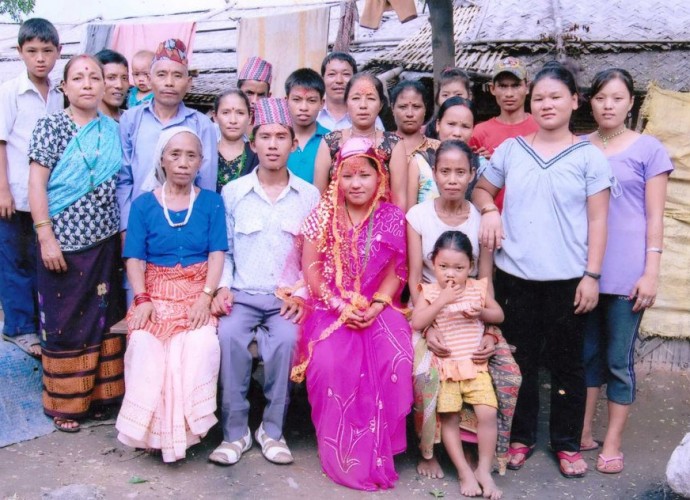
Weddings such as this Hindu celebration of Dal Pulami and Sumitra are joyous occasions, even in the difficult surroundings of the refugee camp. This photo was taken at their wedding in 2009 in the Beldangi 3 refugee camp in Eastern Nepal. Photographer: Unavailable (Permission to publish from Dal Monger).
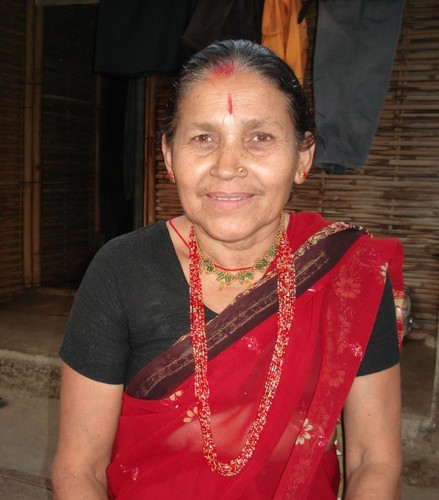
Ms. Hari Maya Acharya spent over 20 years living in a Nepali refugee camp before being resettled to Utica, NY in 2012. Photographer: San Acharya.
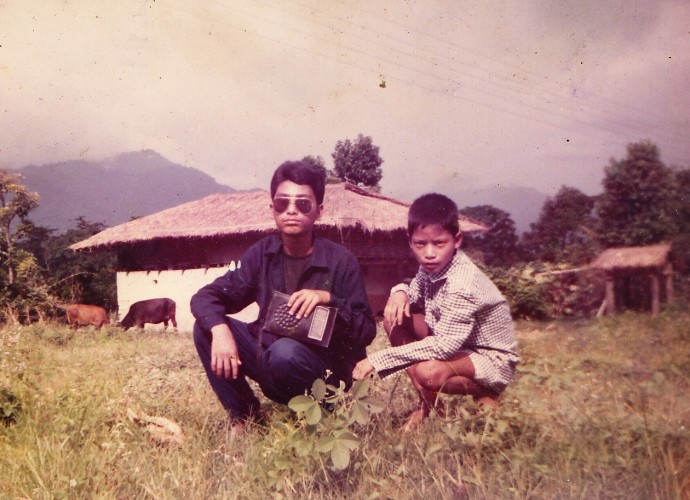
Amber Ranamagar (Left, also from the previous photo) is pictured here with his brother Harka in front of their home in Gelephu, Southern Bhutan, where they lived with their family until they were evicted from their land and their citizenship was revoked by the Bhutanese government in 1992. According to many Bhutanese-Nepali refugees who remember their lives before the conflict, southern Bhutan was a pleasant place with natural beauty and where they appreciated their good health, education, and productive agriculture. Some refugees find it ironic that the Bhutanese government is well known for its “Gross National Happiness,” policy but not for the political conflict and eviction of 100,000, “Lhotshampas,” or ethnic Nepalis living in the South of Bhutan. Photographer: Unavailable. Permission to publish from Mon Ranamagar.
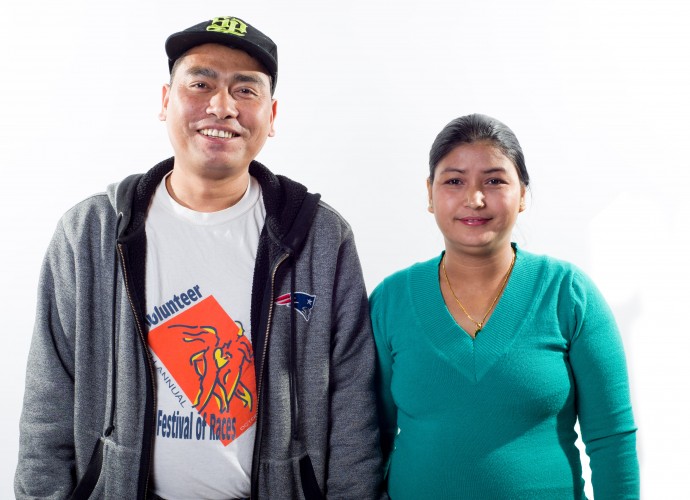
The Central New York Photo Club took portraits such as this one of Amber and Mangali Ranamagar at a worldwide Help Portrait event (help-portrait.com), part of “a global movement of photographers, hairstylists, and makeup artists using their time, tools, and expertise to give back to those in need.” Dec. 2012. Amber (Amara) means “immortal” in Nepali language. His family is growing and thriving in Utica. He appears in the next two photographs as well, as a young man in Bhutan before the conflict with the Bhutanese government. Photographer: CNY Photo Club.
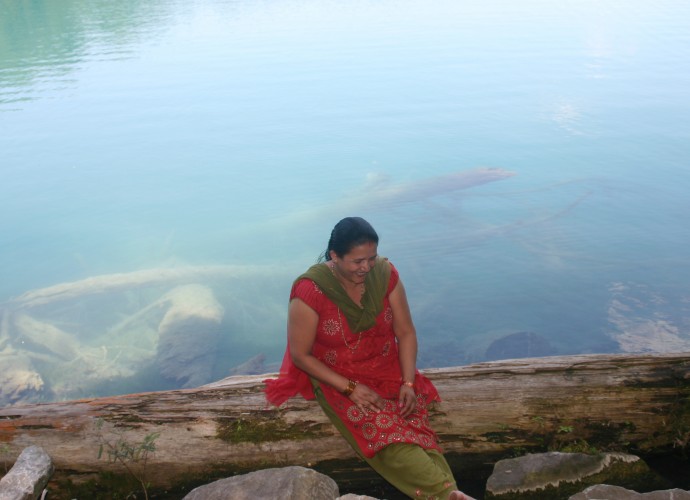
Green Lakes State Park near Syracuse, NY is a popular picnic destination and was the site of this photo taken of Nara Adhikari. The residents of Utica have many connections with the larger Bhutanese-Nepali community in Syracuse and some people go there often for visiting and shopping at the Nepali stores. July, 2012. Photographer: Terrin Munawet.
by Kathryn Stam (Associate Professor of Anthropology, SUNY Polytechnic Institute), Katie Reilly, and Mon Ranamagar.
The United States accepted 60,000 Bhutanese-Nepali refugees for resettlement starting in 2008. The small population (about 350 people) was resettled to Utica, NY and more people continue to arrive in small numbers. The resettlement process was done through the Mohawk Valley Resource Center for Refugees, whose staff helps refugees find affordable apartments, access medical and social services, and learn about their new community. Some refugees spend their days learning English while others are at home taking care of their children or working at a nearby factory or casino. Although refugees are usually resettled with their families, they also have friends and extended family spread throughout the United States, Canada, Europe, and Australia.
The images and stories presented in this photo essay come from the authors’ experiences with the “Refugees Starting Over in Utica, NY,” project at the SUNY Polytechnic Institute, and are limited to topics related to the Bhutanese-Nepalis. The mission of the project is to provide opportunities for students and community members to share stories and traditions across cultures. The founders, anthropology professor Kathryn Stam and graduate student Katie Reilly, had heard that Utica was “The Town that Loved Refugees,” and that there were 39 languages spoken in the Utica City School District. They wondered if the refugees loved Utica back. Through the events, stories, and images that they collected, the authors conclude that most Bhutanese-Nepali refugees find the culturally diverse city of Utica, NY to be a welcoming and tolerant city. However, many refugees also struggle with problems such as poverty, language barriers, inadequate educational opportunities, the cold climate, low wages, and rapid culture change.
The photos come from a variety of sources including talented photographers who were invited to help document Starting Over project events, the authors themselves, community members, and volunteers. Some of the images were scanned from old photo albums that refugees brought with them from Bhutan and Nepal, and others were taken (with permission) from Facebook pages of the authors’ contacts or friends of the Starting Over project. The images have been chosen to represent an overall view of the types of images of Bhutanese-Nepalis that are in the Starting Over collection and the variety of activities and events with which local refugees are involved.
For more information about the project, including a short film and audio clip featuring Bhutanese-Nepali refugees, please visit: www.startingoverutica.com
For more images like these, including some from other refugee groups, please visit: http://resettlementsnapshots.wordpress.com/
